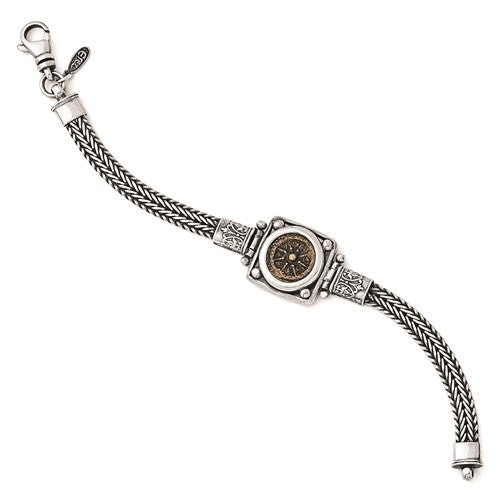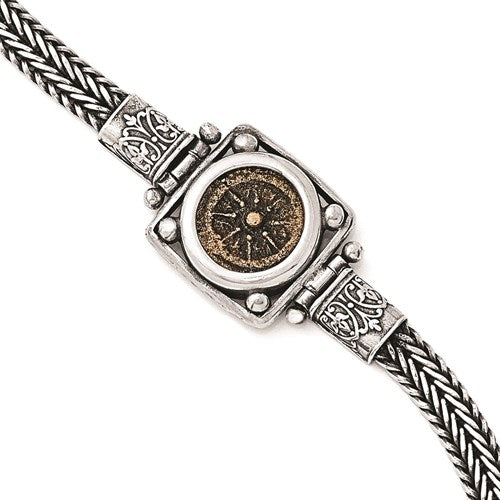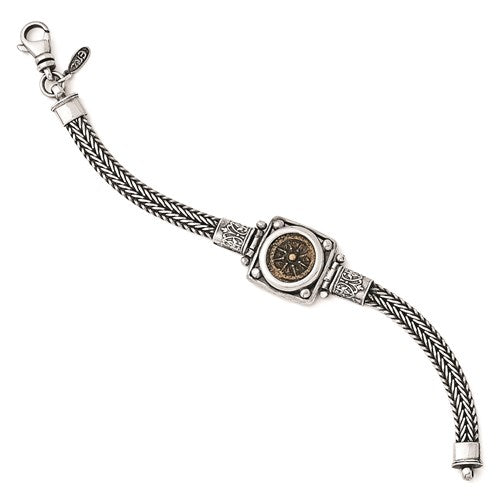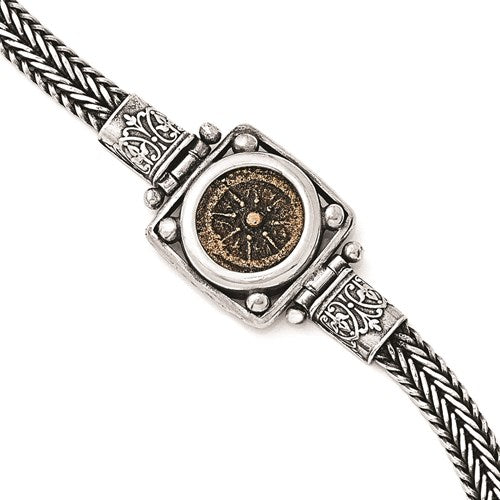The Wholesale Jeweler
Sterling Silver And Bronze Antiqued Widows Mite Coin 7in Bracelet
Couldn't load pickup availability
The center coin is a widows mite coin mounted in a sterling silver 7 inch bracelet. The bracelet is 6mm wide and weighs 21.25 grams.
The Widow’s Mite is the most fascinating of the New Testament coins. The "mite" or "pruta" was the smallest of the bronze coins in Jewish currency. These coins were frequently mentioned in the New Testament manuscripts as we can read, for example in Mark 12:41-44, "And He sat down over against the treasury, and beheld how the multitude cast money into the treasury; and many that were rich cast in much. And there came a poor widow, and she cast in two mites, which make a farthing. And he called unto him his disciples, and said unto them, Verily I say unto you, This poor widow cast in more than all they are casting into the treasury: for they did cast in of their superfluity; but she of her want did cast in all that she had, even all her living."
The smallest bronze coins in circulation at the time were the pruta coins of the Hasmonean (Maccabean) dynasty. The period of the Hasmoneans extended over some 130 years, from the Maccabean revolt in 167 B.C. until the murder of the last of the dynasty, Mattathias Antigonus, in 37 B.C. After the death of Antiochus IV Epiphanes in 163 B.C., the Seleucid dynasty of Syria began to decline, giving encouragement to the Hasmoneans in their ambition to renew the political independence of the Jewish people following the military successes of Judah Maccabee. It was Antiochus VII Sidites who, according to 1 Maccabees 15: 2-9, sent an epistle to Simeon, last of the Maccabee brothers and the first to achieve actual rule (142-135 B.C.), in which he specifically stated: "...I give thee leave also to coin money for thy country with thine own stamp...."
Thus the small pruta coins, which were to become famous for thousands of years, were struck in Jerusalem from the time of the earliest Maccabees, and by their successor, King Herod the Great
This ancient coin pendant comes in a velvet gift pouch and a certificate of authenticity.
Shipping & Returns
Shipping & Returns



